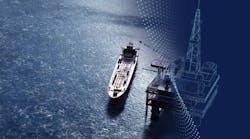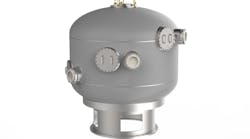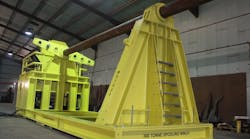Editor's note: This story first appeared in the May-June 2023 issue of Offshore magazine as part of the Remote Inspections & Operations Special Report.
By Jason Chadee, SparkCognition
Oil rig incident and death reports are moving targets. It is widely acknowledged that the offshore oil and gas industry is one of the most dangerous in the world, yet there is no reliable system for tracking and reporting injuries and fatalities. What is definitive is the dangers associated with the job.
Between 2008 and 2017, there were more than 1,500 deaths on oil rigs in the US. In its 2021 safety report, the International Association of Oil and Gas Producers showed an increase in the number of deaths in the industry overall, from 14 in 2020 to 20 in 2021. The total injury rate was 0.77 in 2021, a 10% increase from the year prior and 580 lost workdays. A 2021 private investigation found that the Bureau of Safety and Environmental Enforcement, the government agency created to improve safety and enforce environmental regulations in the offshore oil and gas industry, underreports the number of offshore worker deaths due to inconsistent or missing data or loopholes that allow some fatalities to go unreported.
In 1983 the Occupational Safety and Health Administration (OSHA) and the US Coast Guard entered into an agreement giving OSHA statutory authority to promulgate regulations that address working conditions on offshore drilling platforms. OSHA maintains that the safety of oil rig workers is a leading priority and has enacted measures to mitigate safety and health hazards and dangerous conditions, but reactionary workplace safety initiatives are insufficient.
Benefits of AI
With the industry’s commitment to safety at its strongest, visual artificial intelligence (AI) is being deployed as a proactive approach and technological disruptor in limiting injuries and loss of life on offshore installations.
The is a visual AI technology available today that utilizes the closed-circuit televisions (CCTVs) that are ubiquitous on rigs these days for around-the-clock surveillance for machine monitoring, antipiracy deterrents and workplace safety. CCTVs alone collect and store visual data but are only effective with dedicated staff monitoring 24/7, a practical impossibility given inevitable operator fatigue. Even when information is successfully collected, it only provides retrospective evidence.
Offshore extraction companies can configure and deploy vision-based applications, leveraging existing infrastructure, using a low-code/no-code scalable AI-enabled computer vision program. When coupled with a library of pre-existing use cases for safety and security, computers and systems can capture and interpret meaningful information from image and video data and respond accordingly in real time, transforming them into proactive analytical assets that provide actionable insights and automated alerts to manage risks, processes and workforce safety.
Platform operators can flag HSE compliance failures or insufficient personal protection equipment, identify persons in distress, and spot potential damage to inventory and impending accidents, which results in cost savings, improved reputation and increased overall safety in daily operations.
AI modeling can also improve rig or platform availability at scale, creating financial incentives while improving safety for engineers and operators. When deployed onshore in a remote control center, it provides alerts, alarms and can trigger automated protocols increasing overall operational visibility. When fully deployed across an entire fleet of offshore rigs or platforms, AI modeling can significantly impact the economics of a business.
AI is unequivocally transforming offshore operations. It improves health and safety management initiatives, helps minimize unplanned downtime and production impacting events, proactively manages periodic maintenance and reduces costs, helps reduce the carbon footprint, maximizes the life of assets and can offer advanced cyber threat detection.






